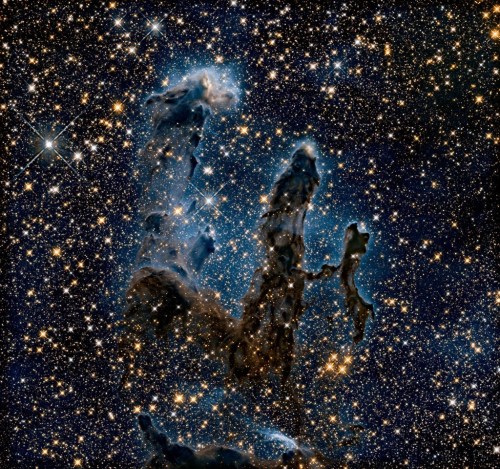Latest Posts by astronomyandgalaxies - Page 5

NASA spacewalkers Bob Behnken and Chris Cassidy
iss063e053998 (July 21, 2020) --- NASA spacewalkers (from left) Bob Behnken and Chris Cassidy give a thumbs up during a spacewalk to install hardware and upgrade International Space Station systems. This photograph was taken by an Expedition 63 crew member inside the cupola, the orbiting lab's "window to the world."
NASA Johnson on Flickr

Comet C/2024 G3 (ATLAS) © Don Pettit
Think we’re alone? Were this close of finding life! As a matter of fact, we’re currently studying possible life right now and think we may have finally found it

1200 Megapixel

International Space Station..

Orion Nebula photo 114 Years apart
The 1901 photo was taken by George Ritchey at Yerkes Observatory, using a 24 Inch (609mm) reflecting telescope. Amazing how far Astronomy has come




Steinar Lund, Morris Scott Dollens, Ray Feibush, and Robert McCall.

Hubble Ultra Deep Field

Pillars of creation in infrared

Christmas Tree star cluster

apollo astronauts train for recovery operations at sea

V838 Monocerotis
V838 Monocerotis, often referred to as V838 Mon, is a red variable star located in the constellation Monoceros.
It gained significant attention in early 2002 when it underwent a dramatic outburst, increasing in brightness by several magnitudes. This event was unusual because it was not a typical nova or supernova; instead, it was classified as a "light echo" phenomenon.
Credits: NASA and the Hubble Heritage Team (AURA/STScI)

Galaxy NGC 5584
The brilliant, blue glow of young stars traces the graceful spiral arms of galaxy NGC 5584. Thin, dark dust lanes appear to be flowing from the yellowish core, where older stars reside.
And congrats to Mercury for being Tumblr's least favorite planet!



This one was expected, I love Mercury but it just looks (and is tbh) a little boring. Still a cool planet, love the craters!!

Syd Mead, space station concept art, c. 1970s.

NGC 1999
NGC 1999 is a reflection nebula located in the constellation Orion.
It is notable for its striking appearance, which includes a dark patch that resembles a hole in the surrounding gas and dust.
This dark region is often referred to as the "hole" in NGC 1999, and it is thought to be a result of the absorption of light by the dust in the nebula.
Credits: ESA/Hubble & NASA, ESO, K. Noll
The celestial object of the day is TOI-1338b, unofficially known as Wolftopia!


This planet orbits around two stars, causing irregularities in its orbit, making it vary between 95 and 93 days. Although its orbit will keep being stable for another ten million years, its angle towards us will change, meaning that we can't see another transit until 2031.





Here's a rare mind blowing moment in the astronomy world. Clearest images ever taken of Equatorial Ridge on Saturn's moon 'Iapetus'.
The celestial object of the day is Phobos!


It's Mars's largest moon with 21 km (13 mi), it orbits Mars at only 6,000 km (3,700 mi) and it gets closer by 1.8 meters every year, at that rate is expected to collide with Mars or form a planetary ring in about 30-50 million years!

Stepping out on the front porch. Astronaut David Scott opens the hatch to check out the view during Apollo 9, March 1969. In this pic taken by fellow astronaut Rusty Schweickart, ‘Gumdrop’, the Command Service Module is docked with ‘Spider’, the Lunar Module. A9 was the 1st flight incorporating all Apollo spacecraft components. The 10 day mission was the 2nd launched by a Saturn V rocket.

James Webb Space Telescope image of Pillars of Creation



















